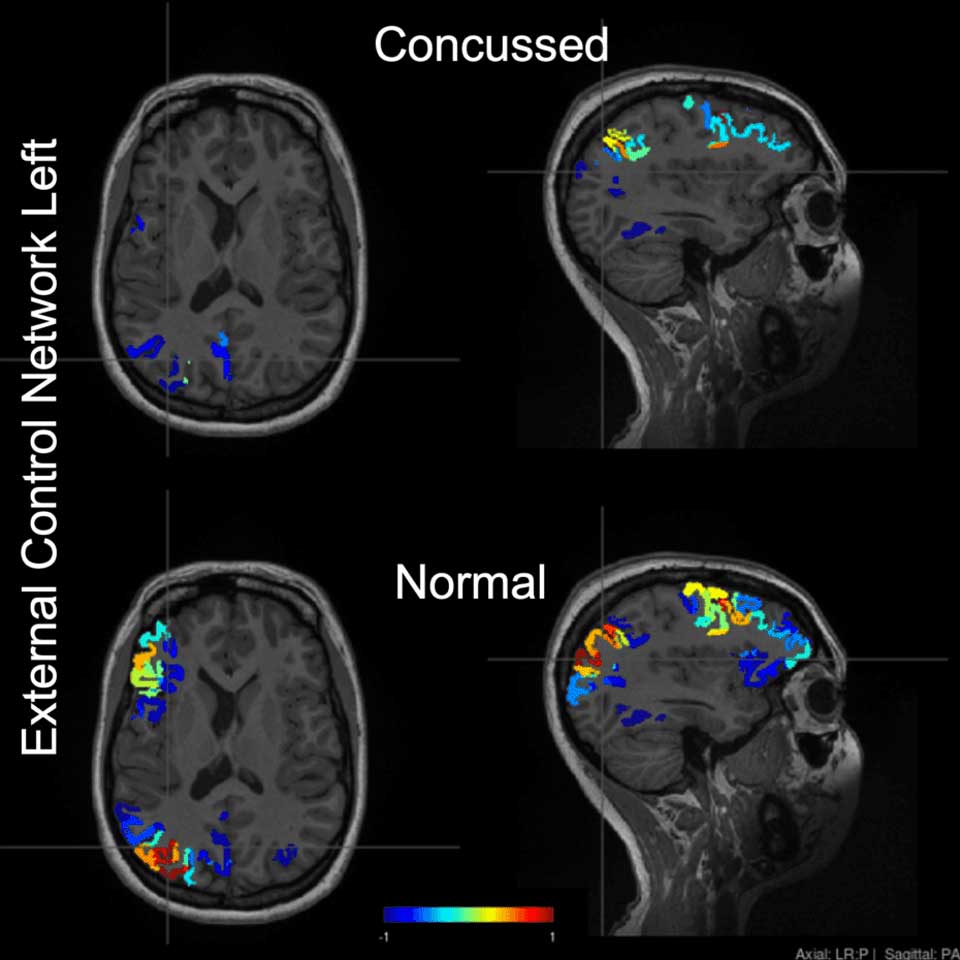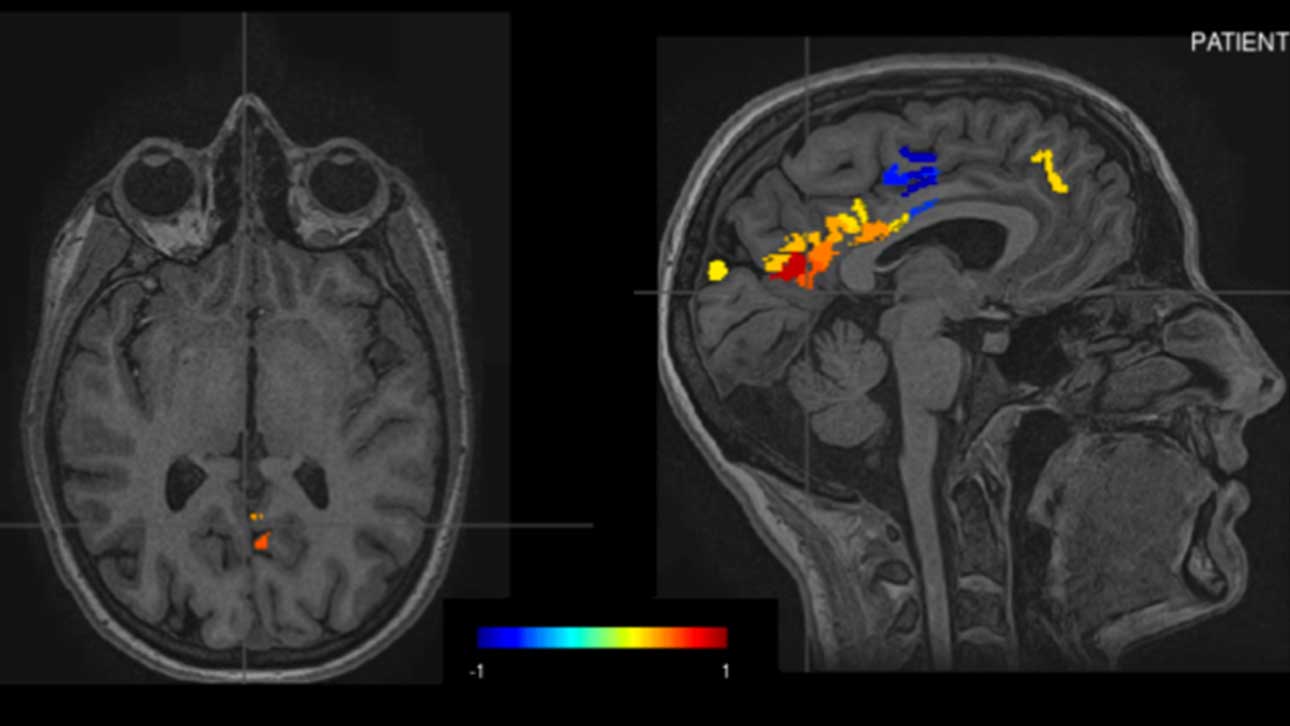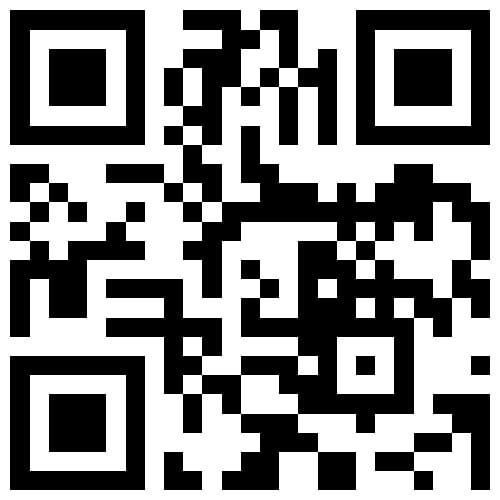A bruised leg is relatively easy to diagnose and treat, and has a predictable recovery time; a wounded brain, much less so.
Now, a Western physicist-turned-neuroscientist has developed unique brain-imaging software that is helping a London, Ont., law firm strengthen the case for better support for clients with concussions.
Andrea Soddu, who is a professor of particle physics, researcher at Western’s multidisciplinary Brain & Mind Institute and principal investigator at the Western Institute of Neuroscience, has built a data tool that provides detailed information from brain scans – something that can help neurologists and radiologists know objectively whether, and in what ways, a patient’s neural networks differ from those of “normal,” non-injured patients.
Western neuroscientist Andrea Soddu

The software, called GraphICA, can help medically detect, locate and quantify damage by comparing the concussed brain’s function, structure and circuitry with those of healthy brains.
“We’re using state-of-the-art scanning research facilities and our new software to generate reports that will show abnormalities that a neurologist and radiologist can interpret to confirm a diagnosis,” said Soddu.
This represents a radical shift from the way the legal community deals with moderate brain injury now, said Christopher Collins, LLB’91, a personal injury lawyer with Siskinds The Law Firm, which has signed a contract for services with Soddu’s company, Brainet.
“Typically with a concussion, the doctors, occupational therapists and speech language pathologists, and other professionals that we work with are basing a lot of their diagnoses and prognoses on patients’ self-reported symptoms,” Collins said.
Patients frequently describe fatigue, headaches, depression and/or vision issues – some symptoms showing up or continuing long after the concussion took place – “but often there’s no objective way to assess that. It’s an invisible injury,” Collins said.
“Andrea and his team are helping us visualize the injury that’s there, showing us objectively if there’s damage.”
That can help corroborate a clinical diagnosis and – by helping the treatment team determine which specific brain systems or areas are having difficulties – can guide therapy more precisely.
lawyer Chris Collins

Notably, from a legal standpoint, that information can also bolster personal-injury claims, Collins said.
It has been used so far to scan about 40 patients on behalf of Siskinds, and to sway favourable decisions in half a dozen insurance cases so far.
“It’s made a significant impact” by taking guesswork and supposition out of the diagnostic equation, Collins said.
“It benefits the whole community, every person who has a concussion who is still having symptoms two or three months after their injury. It helps direct their treatment and it helps them improve their quality of life. And, if they aren’t going to get better, then ultimately it helps look after their long-term needs.”
The technology, which has not been tested in Canadian courts, is not used to provide medical diagnoses but to confirm them, Collins noted.
“What Andrea is doing here is definitely cutting edge. There are other groups that are doing similar things but he’s ahead of the pack.”

The technology
The GraphICA software synthesizes information from scans to assess abnormalities in three different brain sectors and systems:
- It uses information from magnetic resonance imaging (MRI) to understand the physical structure of the brain.
- It assesses, through functional MRI, how the brain is working while at rest, also called spontaneous activity as it doesn’t require the patient to do any specific tasks.
- It uses diffusion tensor imaging, which helps understand how well neuronal fibres support networks in communicating information within and between different regions of the brain.
Soddu likened these neural networks to airports that track arriving and departing planes from multiple airlines, while they also work out the logistics of flights connecting with other airport hubs.
If there’s a glitch affecting a small regional airport, a small number of flights and people will be affected. But if a major international flight hub were to go down, “this will have repercussions on the whole network.”
The same holds true for networks in the brain that manage memory, movement, hearing, balance or language, for example.
The software, fully automated, generates a report that outlines any of these structural, functional or network abnormalities. That’s then passed along to a third party and sent to a neurologist or radiologist to scrutinize, and then sent to Siskinds.
“Our report says, ‘here are the differences from a baseline case,’” Soddu said. “For us, it’s really important that we keep this neutrality, be as unbiased as possible. So we just take the data, analyze it and give it back. We don’t even want to know what the injury was; that’s not our job.”
Growing partnership
To conduct the work, Soddu founded Brainet with Demetrius Ribeiro de Paula, the company’s chief technology officer and developer of GraphICA.
Western professor Blaine Chronik, who specializes in medical physics and MRI, has been a driving force in the development of Brainet early on during the start-up phase.
Siskinds signed on in fall 2021 after more than a year of conversation.
Collins, a self-described “geek” always keen on exploring new technologies, was introduced to Soddu by a mutual professional acquaintance, David Corey, CEO of Brain Scan Diagnostics. “I don’t pretend I understand anywhere close to the level Andrea does, of course, but I know enough to get excited about it and to see the potential of it,” Collins said.
For Soddu, it’s gratifying to layer practical application onto basic research.
In the future, he hopes enough data can be collected so that artificial intelligence can help determine or confirm health issues, such as post-traumatic stress disorder, tinnitus or chronic pain.
“It’s always exciting to transition from research to applying the science and then applying the results to benefit people’s lives,” he said.
Author: Debora Van Brenk
Date: 2022/03/16
Source: https://news.westernu.ca/2022/03/neuroscientist-lawyer-partner-concussion-research/



